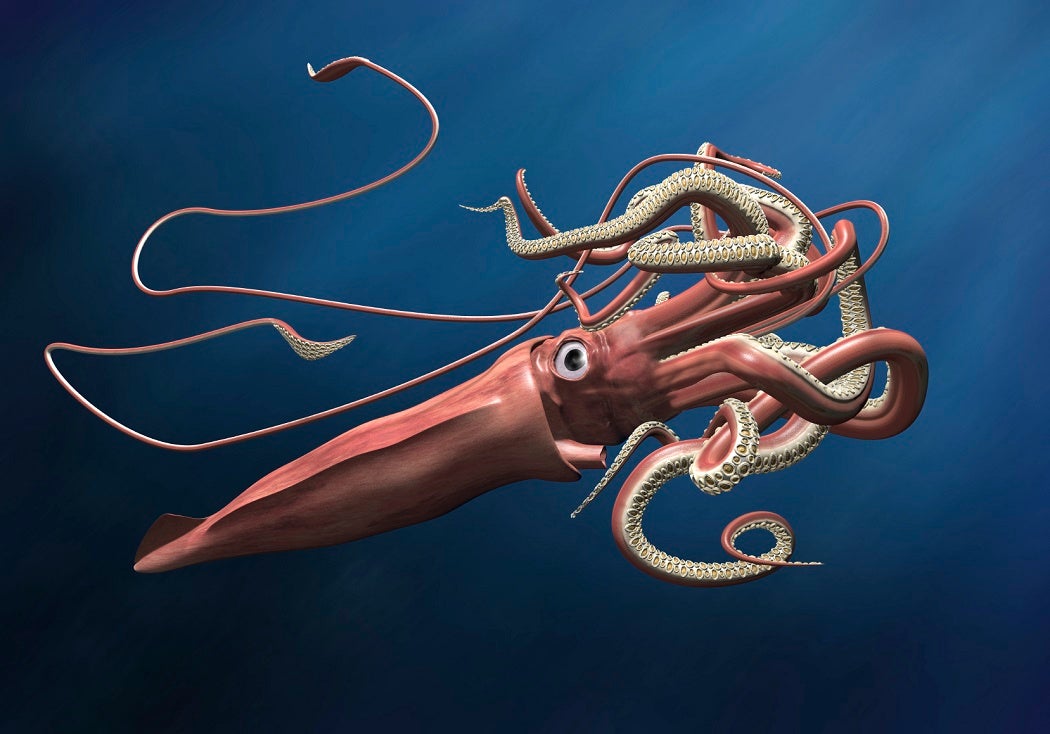Three jumbo squids found themselves wearing fancy “sweaters” recently, thanks to a team of scientists from Stanford and the National Geographic Society. These were no ordinary sweaters—they were synthetic cloth sleeves carrying National Geographic’s Crittercam system, which recorded the squids’ behavior in their natural habitat. The resulting videos revealed insights on patterns of color change seen in the species, and also provided hints as to the causes behind these changes.
For example, the scientists were able to identify a bold “flashing” behavior in the squid, where its skin changed from its usual pale white color, to a dark red, and then back again a few times per second. Flashing occurred only when other jumbo squids were nearby, so it seems likely to represent some kind of intra-specific communication. They also noticed “flickering” patterns, which involved “irregular wave-like” color changes, rippling across the skin’s surface as the squid navigated through the ocean independently. The scientists think that this flickering could mimic the effects of sunlight rippling through water, allowing the squid to camouflage itself in shallower depths.
While this discovery is a first for the jumbo squid specifically, and marks the first successful use of Crittercams (i.e., fancy sweaters) with cephalopods, the extensive repertoire of visual communication amongst other kinds of squid is well-documented. This 1999 article in Biological Bulletin describes an “ethogram” for the Loligo pealei species—essentially a decoder ring for the species’ changing colors, textures, movements, and postures. So now, when a squid displays “banded bottom sitting” or “weak lateral flame”, we can understand more about the larger context, e.g., whether it is hiding from a predator, challenging a competitor, or guarding a mate.
But because deep-sea squid live in relatively low-light environments, they have to get a bit more flamboyant with visual communication. An ethogram created in 2009 for the deep-sea Octopoteuthis deletron species identifies 59 behavioral components, including complex bioluminescent patterns. For example, sometimes these squid will simultaneously light up the tips of all of their arms, a dramatic gesture which may serve to startle predators (and seriously, wouldn’t that be startling?)
Of course, we may never know exactly what squid are thinking as they go about their everyday lives, or what revenge they may be plotting against us for outfitting them in sweaters. That said, these kinds of studies make it clear that squid behavior is more complicated than we might have previously imagined.







